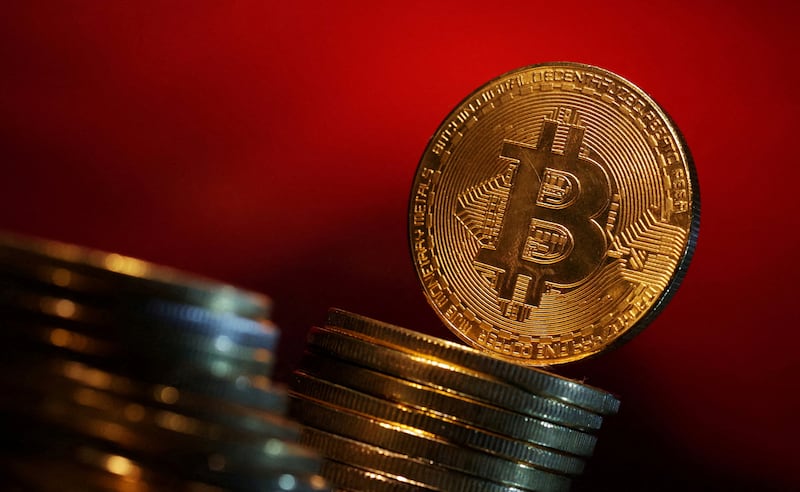Bitcoin was trading at $61,688 on Thursday morning after briefly dropping below $60,000 on Wednesday, with volatility increasing in the lead-up to a highly-anticipated software update in the blockchain called halving.
The largest cryptocurrency has dropped by about 18 per cent since it reached a record $73,797 on March 14.
Bitcoin halving countdown - when will it take place?
Halving – which takes place every four years – is scheduled for as soon as Friday. It has long been touted as a positive catalyst for cryptocurrency prices since it reduces supply of new tokens from the blockchain.
“Lower supply is fundamentally supportive of an asset’s valuation, but we might not see a clear kneejerk reaction to Bitcoin halving as most of it is already priced in,” said Ipek Ozkardeskaya, senior analyst at Swissquote Bank.
How will Bitcoin halving impact prices?
Historically, it’s proved a catalyst for prices, however, there are doubts whether a repeat is likely this time around, given Bitcoin already hit a record high in mid-March.
Previous Bitcoin halvings in 2012, 2016 and 2020 were followed by massive rallies in its price. For instance, a year after the May 2020 Bitcoin halving, the crypto’s price was up more than 545 per cent.
“This current cycle stands out from all the other previous cycles as the Bitcoin price has already achieved a new all-time high – even before the halving,” Bitfinex analysts said in an April 8 report.
They predicted that Bitcoin's price would soar about 160 per cent in the 12 to 14 months after this year’s halving, which could push the token to an all-time high of more than $150,000.
What does Bitcoin halving mean?
Bitcoin mining is an energy-intensive process, in which miners use specialised computers to validate transactions on the blockchain and earn a reward in the form of the token.
That reward, which comprises the vast majority of mining revenue, is cut in half every four years due to the preprogrammed halving event.
The upcoming halving will reduce the amount of Bitcoin reward to 450 tokens in daily production, from 900.
Halving involves a change in the token’s underlying blockchain technology that is designed to reduce the rate at which new Bitcoins are created.
However, concerns over whether the halving has already been priced in against the backdrop of a risk-off investment environment have prompted a rout in Bitcoin prices.
“Wednesday’s higher-than-expected US inflation prints have raised many eyebrows, and Saturday’s conflict escalation in the Middle East was first seen in the always-open, risk sentiment betting line, the digital assets market. Prices were quick to retrace, with Bitcoin reaching lows close to $60,000,” according to Manuel Villegas, next generation research analyst at Swiss private bank Julius Baer.
“Even if Bitcoin shares some qualities with gold, the latter remains the go-to risk-off asset, and gold prices remained high amid the recent stress, while Bitcoin’s prices retraced.”
The upcoming and fourth Bitcoin halving is unlikely to come with immediate effects, as the deceleration of supply growth is likely to be felt over the course of the next few months, Mr Villegas explained.
Bitcoin hit an all-time high in March as investors cheered new US spot Bitcoin ETFs and bet on the entry of new institutional money into the asset class.
The ETFs launched by traditional asset management firms in January have attracted billions of dollars.
Bitcoin ETFs “brought in a tremendous amount of interest and net new flows into Bitcoin preceding the halving event, whereas in the past, we’ve seen price levels right after the halving event bring in those new flows”, Thomas Perfumo, head of strategy at crypto exchange Kraken, told Reuters.
Other bullish events in the industry also contributed to the gains, researchers at crypto analytics firm Kaiko said in a note.
The US Federal Reserve is expected to cut interest rates this year, which could boost risk assets such as cryptocurrencies.
The confluence of ETFs, quantitative easing and halving will define the future contours of the market, said Stefan Kimmel, chief executive of crypto exchange M2.
He added that regulatory bodies are likely to remain focused on the core characteristics of cryptocurrencies rather than transitory price drivers.
Each Bitcoin halving sharpens the narrative of Bitcoin as not just a currency, but a scarce digital asset, akin to digital gold, said Ben Zhou, co-founder and chief executive of crypto exchange Bybit.
“This upcoming halving in 2024 will thrust Bitcoin into an era of unprecedented scarcity, making it twice as rare as gold,” he added.







